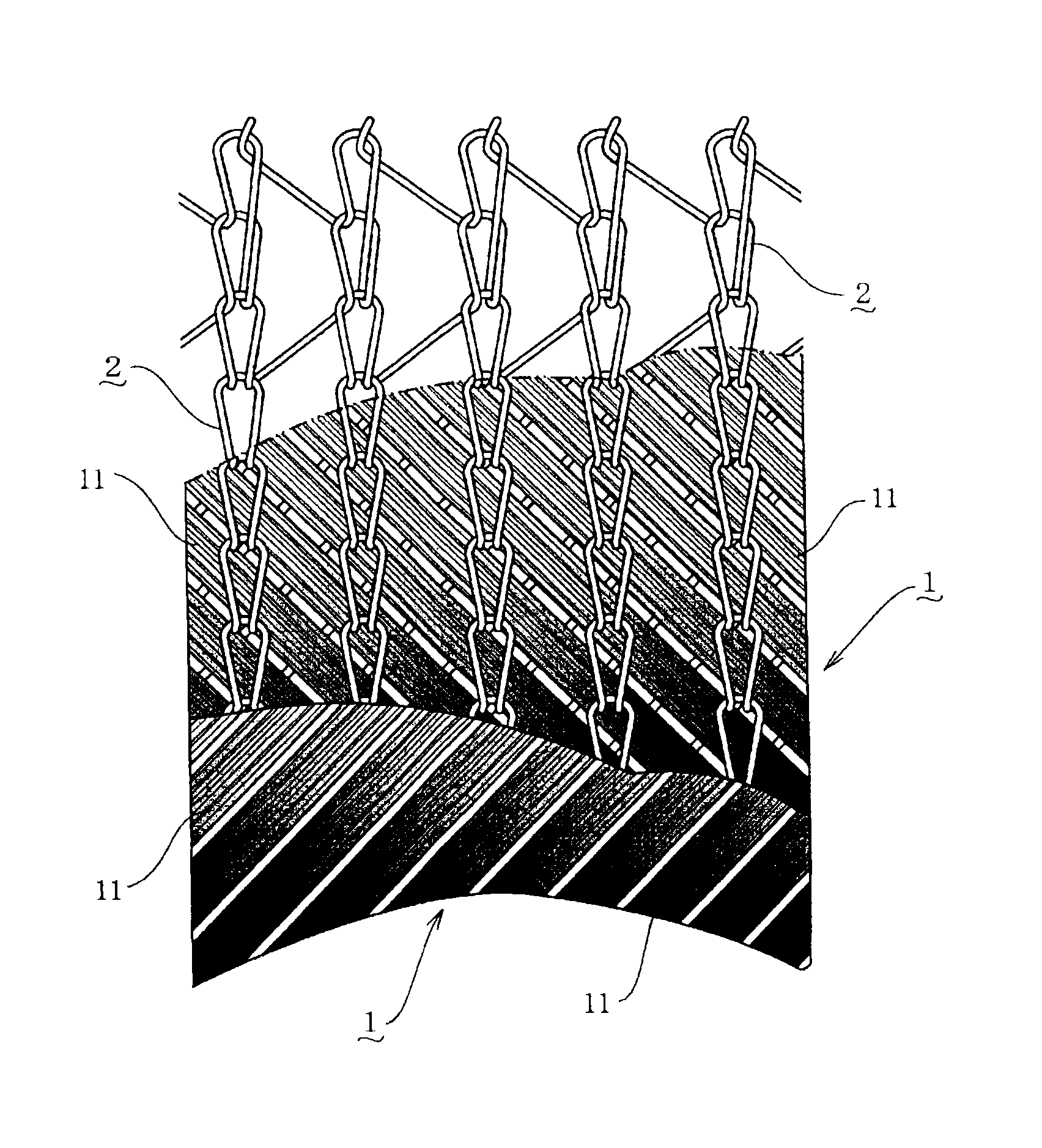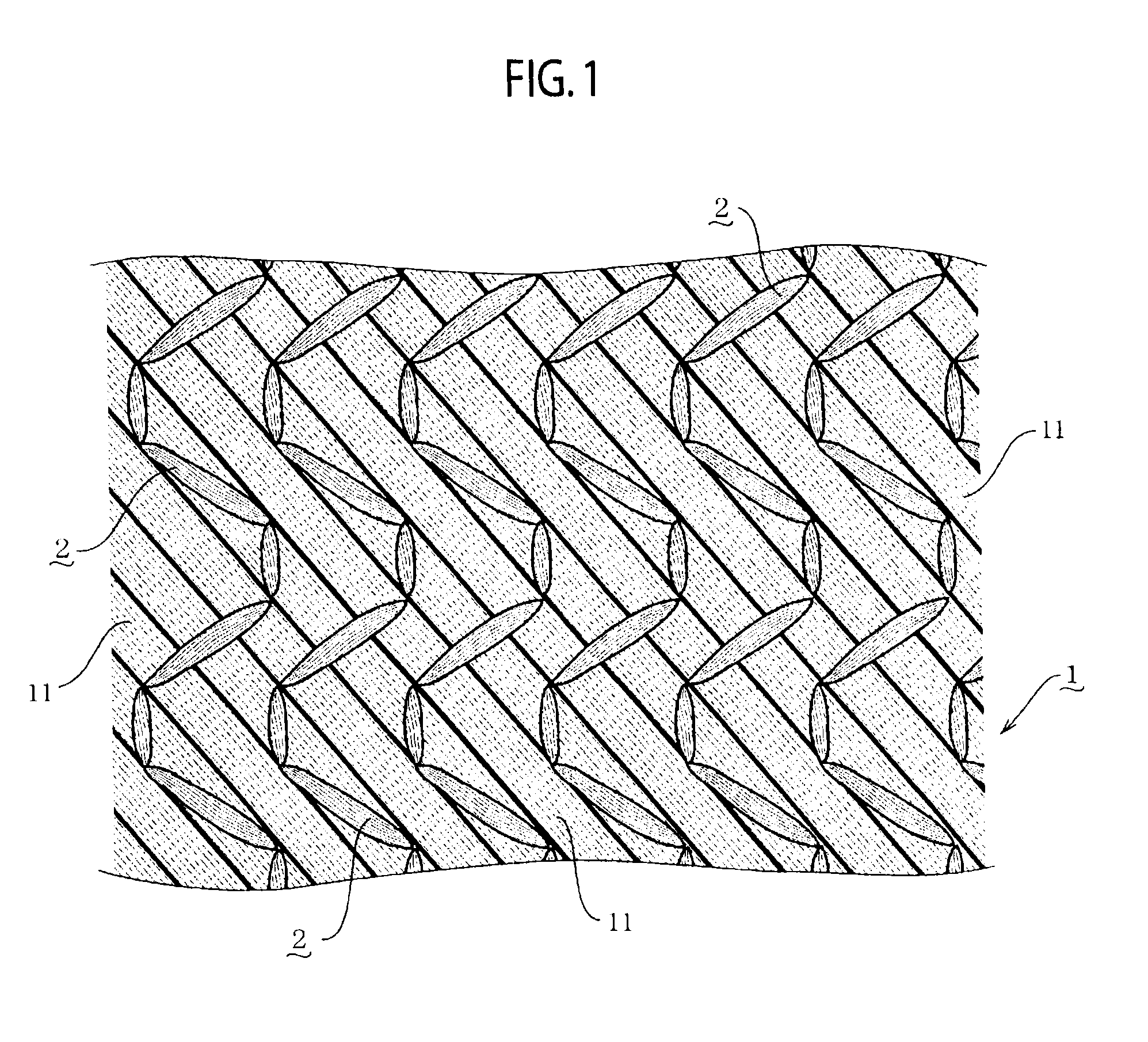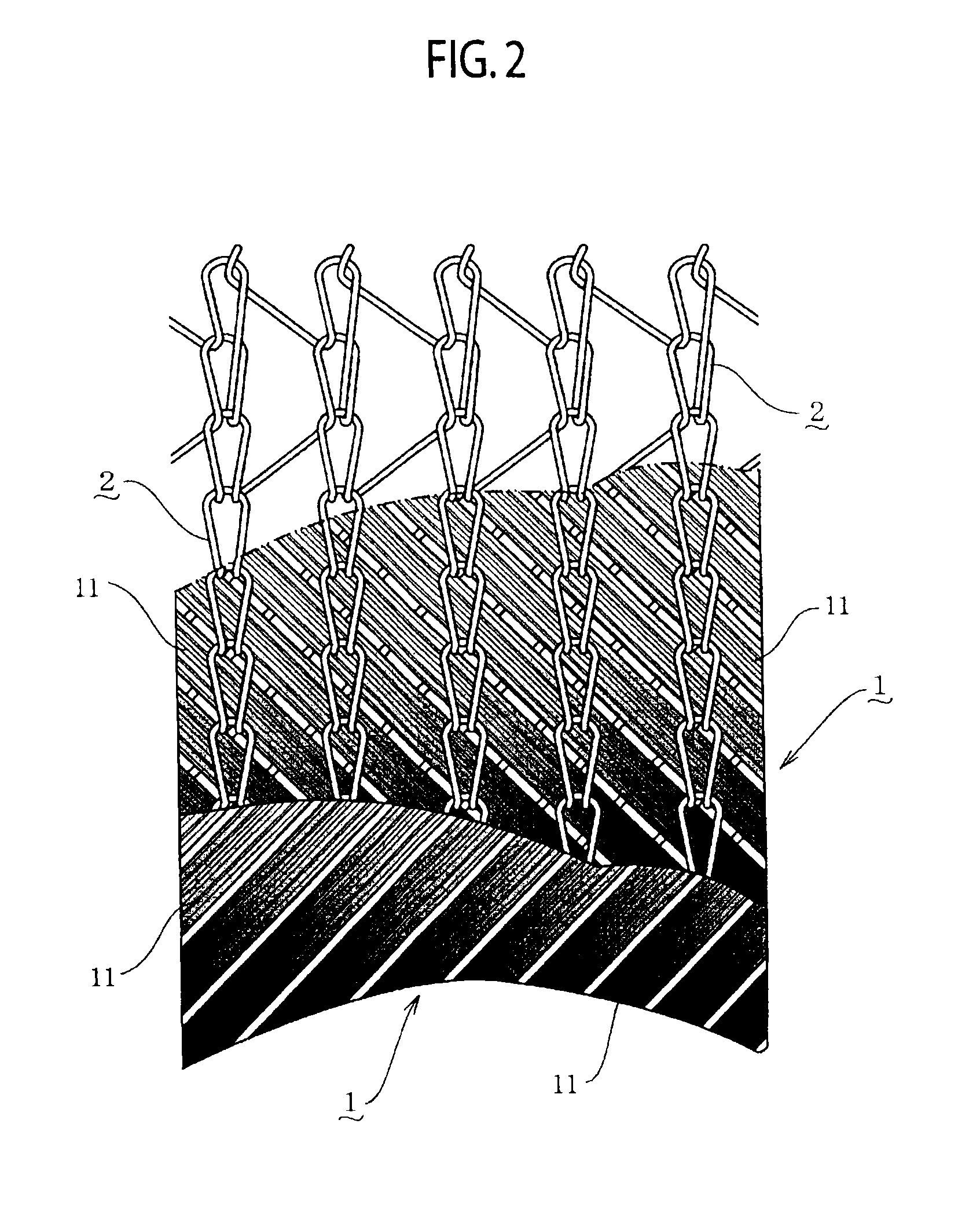Stitched carbon fiber base material and wet prepreg using same
a technology of wet prepreg and carbon fiber, which is applied in the direction of final product manufacturing, knitting, transportation and packaging, etc., can solve the problems of increasing operating burdens and costs, prone to elongation in a lengthwise direction of biased base material manufactured by this method, and considerable disordered array of carbon fibers therein, etc., to facilitate the production of three-dimensional shapes, excellent form stability and shapability, and excellent handling
- Summary
- Abstract
- Description
- Claims
- Application Information
AI Technical Summary
Benefits of technology
Problems solved by technology
Method used
Image
Examples
example 1
[0088]As the stitched carbon fiber base material, each sheet was prepared by using carbon fiber lines having a tensile strength of 5880 MPa, a tensile elastic modulus of 290 GPa, and fineness of 1030 tex (the number of filaments equal to 24000) as reinforcing fibers, and arraying the carbon fiber lines in parallel to one another such that the fiber areal weight of the sheet becomes 258 g / m2. Then, the sheets were layered at angles of ±45° relative to the weaving advancing direction of the stitching yarns.
[0089]Thereafter, using polyester fibers of 84 dtex, the base material was stitched with composite weaves including the chain stitch weaves and the 1 / 1 tricot stitch weaves at a wale density of 5 W / inch and a course density of 8.9 C / inch by: stitching two chain stitches continuously; then moving each stitching yarn 2 to an adjacent knitting needle; stitching two chain stitches continuously; and moving the stitching yarn back to the original knitting needle.
[0090]The stitched carbon ...
PUM
| Property | Measurement | Unit |
|---|---|---|
| angle | aaaaa | aaaaa |
| angle | aaaaa | aaaaa |
| angles | aaaaa | aaaaa |
Abstract
Description
Claims
Application Information
 Login to View More
Login to View More - R&D
- Intellectual Property
- Life Sciences
- Materials
- Tech Scout
- Unparalleled Data Quality
- Higher Quality Content
- 60% Fewer Hallucinations
Browse by: Latest US Patents, China's latest patents, Technical Efficacy Thesaurus, Application Domain, Technology Topic, Popular Technical Reports.
© 2025 PatSnap. All rights reserved.Legal|Privacy policy|Modern Slavery Act Transparency Statement|Sitemap|About US| Contact US: help@patsnap.com



